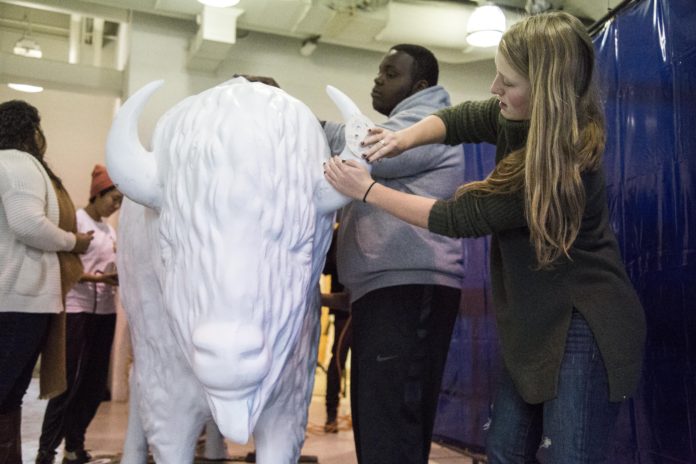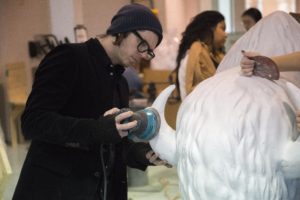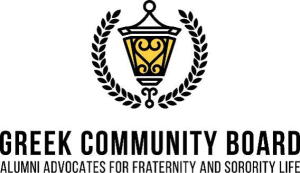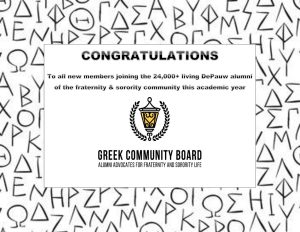

The people of Greencastle will be able to view themselves like never before when the Putnam County’s bicentennial bison is completed.
The bison donated by The Duke Energy Foundation and the Indiana Bicentennial Commission is to be chromed and house in Putnam county to celebrate the founding of the Hoosier state in 1816.
The 200-pound bison will be at the Putnam County Courthouse for its unveiling on Dec. 11 as part of the bicentennial celebration and will stay there for roughly a month before moving to the DePauw University campus.
The Bicentennial Commission launched a statewide public art effort where artists, students, and other Hoosiers have decorated the 5-foot tall by 8-foot long fiberglass bisons. The legacy project aims to engage Hoosiers in Indiana’s bicentennial and to have colorful bison displayed in each of Indiana’s 92 counties. The Duke Energy Foundation is contributing six bison to different locations in its service area, including Putnam County.
Associate Professor of Art and Art History Chair, Lori Miles, has been at the forefront of the bicentennial project. “It was a last-minute opportunity that presented itself to us,” said Miles, “and we were happy to receive it.”
Secretary of Galleries, Museums, and Collections at Peeler, Misti Scott, has worked with Miles to complete the bison. Miles explained that these projects can be handled in different ways. She said sometimes there is an application process, or artists in the area submit ideas and drawings and then the committee decides which one they want to see.
However, because of the last-minute nature of the project, the Art Department had to immediately begin on the bison. Scott said, “We asked for input from the community, but we were informed very close to the deadline, so Putnam County just left it up to DePauw.”
Miles and Scott passed a few ideas back and forth to each other before deciding on Mile’s idea of chroming the beast.“It was the best idea ever,” said Scott.
“Almost all of the other counties have what you would imagine: a little mural on the side, a couple of people, shaking hands, someone famous from the county, and a seal from the state,” Miles said. “They all had that very similar representational collage. We wanted to do something radically different.”
Unlike any bison already done, chroming the piece will offer an entirely new context for people to view the project. “Contemporary art adopted this chroming as it became more readily available, starting with what they call the ‘bean’ in Chicago,” Miles said, “but it’s actually Cloud Gate, which, funnily enough, is not actually chromed.”
As Miles continues to work on the project, she believes that the chroming is not only visually pleasing, but also offers a solution that will not offend anyone. “All of a sudden, who’s included and who is left out becomes a point of contention,” Miles said.
In an attempt to avoid any conflict, Miles hopes that the community will see that the mirrored surface directly reflects back the person who looks at it. “Wherever it sits, whoever is walking by, that’s who will be reflected in it,” said Miles. “It became universal and timeless and not just rooted in this moment.”
“I love it because nobody can say, ‘Oh, you should’ve represented this or that’ because it already represents everything,” Scott said. “It can mean whatever you want it to.”
Miles particularly enjoyed the mirrored effect for its ability to blend in depending on the point of view. “This was interesting to me because it hints at the bison disappearing and then coming back,” Miles said, “and maybe it’s a little optimistic about the Greencastle economy disappearing and then starting to coming back.”
It becomes strikingly evident that there is no one meaning behind the chrome as Miles continued to explain that people may possibly see the chrome as a post-industrial statement or an issue of luxury. “It’s not class based; chrome is luxurious no matter how much money you have, and it’s the same chrome; it’s universal,” said Miles. “It seemed to be ubiquitous and open enough that, for a piece of public art, it could endure criticism.”
Junior Natalie Santiago participated in the initial sanding of the bison last week. Because of the rapidly approaching deadline, she will not be able to consistently participate in the project. However, she appreciates that the Art Department allowing her to participate in these side projects. “It just feels good to contribute,” said Santiago, “and if it’s going to make an impact, I’m glad to know that I played a part.”


